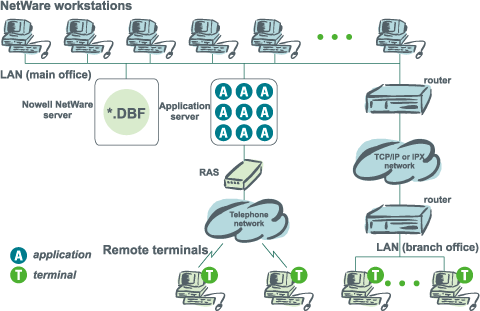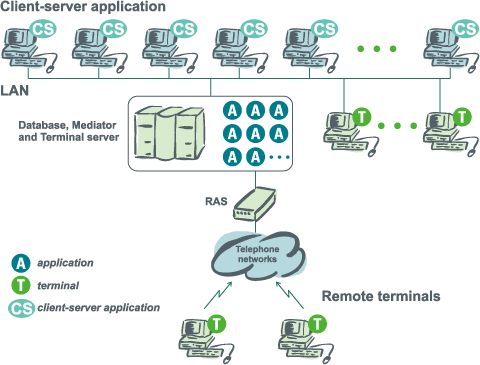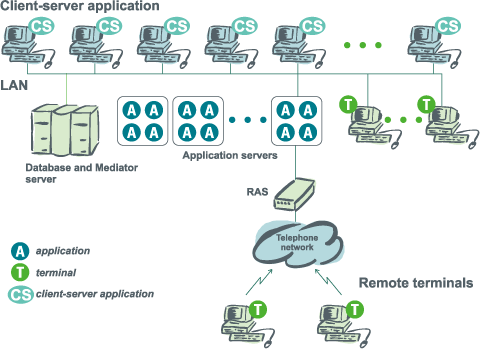The terminal architecture in LAN
Terminals and an application server work in the same LAN. The communication between terminals and a server is realized in either TCP/IP or IPX protocol.
 The terminal architecture in multi-branch companies
The terminal architecture in multi-branch companies
All company branches are connected via WAN, which works in either TCP/IP or IPX protocol. In the center, there is an application server installed, on which all applications of all attached terminals are executed. A possibility of gaining a direct access to NT server via a commutative network (dial-up links) and to non-synchronized ports via a specialized access routers are retained.
 The terminal architecture for remote access to the installation with a file server
The terminal architecture for remote access to the installation with a file server
TERMINAL/CLIPPER software may be used for the realization of remote access of branches or single stations to LAN, where applications in a traditional configuration work with a file server. With such a solution, *DBF files are on the file server and are used by local stations and the applications of remote terminals which running on Windows NT server. Terminal applications access the data via LAN, so they work as effectively as local stations. In case when the file server is Novell NetWare server, the access to the data form Windows NT server is realized via "Gateway Services for NetWare" software.
 The terminal architecture for remote access to the client-server installation
The terminal architecture for remote access to the client-server installation
On the main server there are the database server, Mediator and Terminal installed. On the same server the applications of remote terminals are executed. The workstations working in LAN may work in the client-server or terminal architecture. The communication between terminals and the application server is realized in either TCP/IP or IPX protocol.
Architecture I

Architecture II








